Cuban Tourism: New Goals, Options, and Visions
especiales

Amid challenging times, Cuba continues to pursue the development of tourism with new goals, options, and visions, demonstrating the local leisure industry’s capacity for innovation and adaptation.
These efforts were made public during the recently concluded 43rd International Tourism Fair, FitCuba 2025, held through last Friday at the Morro-Cabaña Park. During visits to the exhibition grounds, the country’s top authorities affirmed the role of this dynamic sector in supporting the recovery of the national economy, especially as it begins to regain momentum.
FitCuba unfolded within the framework of a national strategy aimed at both surviving and progressing, despite a demanding domestic situation characterized by widespread shortages, mostly stemming from the United States’ decades-long economic, commercial, and financial blockade.
Today, resilience and creativity are essential tools in the face of Washington’s ongoing hostility, which specifically targets Cuba’s tourism sector. Even under such circumstances, the island is striving to recover its lost standing, a loss fueled by both internal and external crises. These challenges are further compounded by the campaign to discredit the Cuban Revolution and the nation’s continued inclusion on the U.S. list of alleged state sponsors of terrorism.
The overarching aim is to reposition tourism as a driving force for activating other industries and generating much-needed foreign exchange in order to alleviate the liquidity crisis and improve living conditions for the Cuban population.
This objective, along with others, formed part of the annual forum’s agenda, which welcomed representatives from 58 countries. The event featured keynote speeches and presentations, including the opening remarks delivered by Prime Minister Manuel Marrero Cruz. He called for a bold strategy to restore tourism to its former position as an engine of economic growth.
Different Times Call for Different Solutions
The Cuban government has endorsed a strategy that combines structural reform, innovation, international cooperation, and local empowerment.
Marrero Cruz also highlighted the need to update legal frameworks and policies to encourage foreign investment. This includes exploring new business models tied to real estate, such as leasing tourism facilities, allowing for transactions in foreign currencies, introducing new payment card options, and accepting cash payments.
Additional measures include the launch of new airline routes, the ability to purchase tickets with foreign currency in cash, and the elimination of the health fee at airports, seaports, and marinas. The government has also approved the formation of public-private partnerships between major tourism operators and micro, small, and medium-sized enterprises (MSMEs) and self-employed workers.
FitCuba Showcased the Country’s Tourism Potential
At the closing of the island’s most important annual tourism event—one of the most prominent in the region—President Miguel Díaz-Canel Bermúdez acknowledged that the sector has faced significant limitations, including various pressures aimed at deterring travel to Cuba.
During his visit to FitCuba, the President emphasized that the fair served as proof of the country’s broad tourism potential, which goes beyond sun and beach to include health, community-based, agroecological, and circuit tourism designed to deepen engagement with local communities.
He also reiterated Cuba’s strong commitment to sustainable tourism that aligns with economic, social, cultural, and especially environmental goals. This global trend reflects the nation’s ongoing efforts to preserve its natural resources and biodiversity.
“In these difficult times, we are not attempting to carry out tourism as usual. Instead, we are setting new goals, exploring new options, and embracing new visions,” the President stated in remarks to the accredited press.
China and Cuba: A Shared Tourism Vision
Sources praised China’s participation as the fair’s guest country of honor. China presented a rich offering that blended nature, history, and culture in a wide-ranging showcase of its ancient civilization.
In this year marking the 65th anniversary of bilateral diplomatic relations, the event underscored the expanding ties between both countries, now including tourism. There is optimism that the flow of visitors from East Asia will continue to grow, supported by efforts to bridge geographic distances.
In this context, the development of a multi-destination platform is being promoted. This approach would allow Asian travelers to visit several countries in one trip, benefiting the broader region.
The multi-sector cooperation between China and Cuba stands as both a symbol and a practical example of the strategic nature of the relationship between a large and a small socialist country.
FitCuba 2026: Set for Varadero, with Canada as the Focus Market
After three days of intensive activity—including the signing of agreements and memoranda both inside and outside the exhibition venue—the forum concluded with a ceremony at the world-famous Tropicana Cabaret.
It was announced there that the 44th edition of FitCuba in 2026 will take place once again in Varadero, focusing on the sun-and-beach modality. Canada will be the featured market, coinciding with the 80th anniversary of diplomatic relations between Ottawa and Havana.
Tourism Minister Juan Carlos García Granda made the announcement and referenced the Prime Minister’s remarks on restructuring the sector and updating the legal framework.
“These actions,” he stated, “are already showing results. We are granting more autonomy to business operators, improving competitiveness, and allowing for more flexible management of revenues. We have also introduced the leasing of hotel facilities, which is expected to have a positive impact.”
He added, “We are undergoing a transformation process, dismantling top-heavy structures that have constrained operations at the grassroots level. This is particularly true in areas such as foreign investment, where we are seeking greater autonomy.”
Cuba is an archipelago with a clear vocation for tourism. There is widespread understanding of what must be done to achieve more effective management, tailored to current realities, and with a strong commitment to sustainable tourism.
Tourism recovery is therefore vital for the national economy, for all the sectors that support the industry, and for improving the quality of life for the Cuban people. Hospitality remains one of the country’s key strengths, along with its history, culture, political stability, safety, natural wealth, and heritage.
Translated by Sergio A. Paneque Díaz / CubaSí Translation Staff


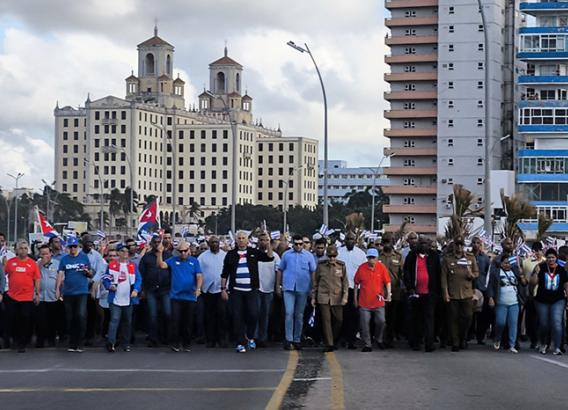
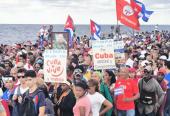

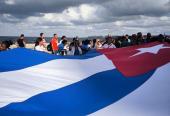
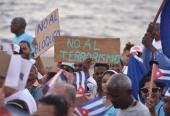



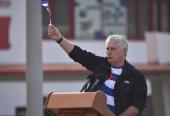
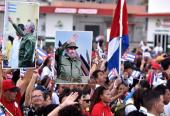

Add new comment